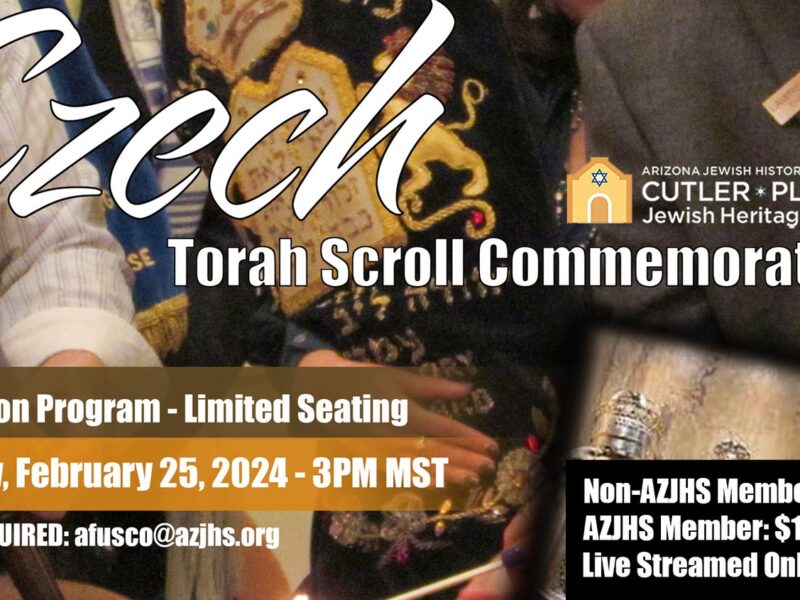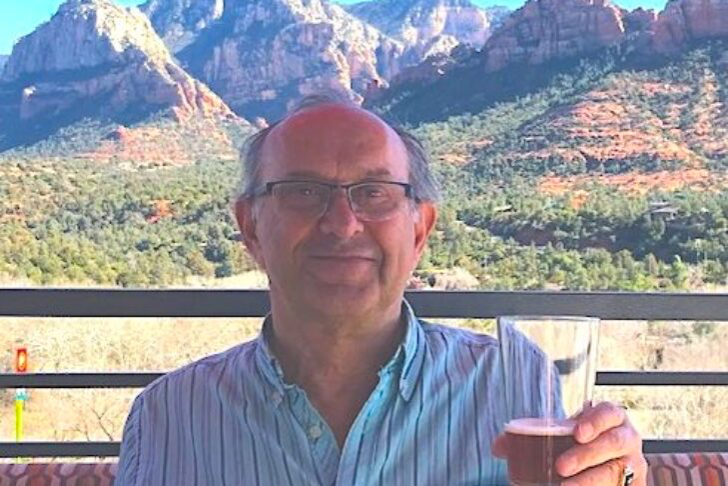Arizona groups and organizations are the first in the country to be offered the opportunity to experience a live tour of Auschwitz in a unique and personal educational experience.
The Center for Holocaust Education, a division of the East Valley Jewish Community Center (EVJCC), has partnered with a long-time Auschwitz-Birkenau tour guide to bring this 2-hour live seminar and interactive tour from Poland directly to the classroom.
This partnership is one of many the EVJCC offers in its mission to educate current and future generations about the Holocaust. Programs include presentations, guest speakers, exhibits, a Holocaust education curriculum for schools, an annual Yom HaShoah program and Generations After, a program for children and grandchildren of survivors. The EVJCC is a member of the Association of Holocaust Organizations.
“The Holocaust is a universal plague, and while it disproportionally affected Jews, it also affected disabled people, peaceful dissenters, gays and lesbians, and citizens of countries throughout the world,” says Rabbi Michael Beyo, EVJCC CEO. “Hundreds of millions of people were affected by WWII and this human historical phenomenon, and my greatest fear is the day that it is reduced to a few lines in a textbook.”
In 2019, 2.4 million people visited Auschwitz. That experience came to an end with the global pandemic until tour guide Dr. Jerzy Wójcik reimagined how to educate the world by taking his expertise, images and education and creating an interactive walk-through of Auschwitz. The East Valley JCC entered into an exclusive partnership with Dr. Wójcik to offer the 2-hour event throughout the United States and Canada.
Dr. Wójcik was born in Oswiecim town (Auschwitz), Poland. He has worked with the Auschwitz-Birkenau State Museum and Center for Holocaust Studies in Krakow, Center for International Relations in Warsaw and has been a guide and educator affiliated at the Auschwitz Museum for 14 years.
The tour Dr. Wójcik has created begins with actual footage from the liberation by the Red Army in 1945. Then using a combination of his own material and media from the museum, Dr. Wójcik takes you through an extraordinary journey. He shows the participant an aerial view on Google Earth of just how large the Auschwitz-Birkenau complex is – the area consists of the main camp and 40 satellite camps. Then you travel through the gates with the words “Arbeit Macht Frei” (Work Sets You Free), past the double rows of barbed-wire fencing to the barracks lined with wooden bunks and the “facilities” – holes in a long concrete bench mere inches from one another – to the gas chambers and crematoriums.
You also see actual photos taken at the “selection platform.” As trains arrived and unloaded their human cargo, the selection process began as SS doctors and wardens evaluated people for their ability to work. Dr. Wójcik points out an older woman in a heavy coat holding a toddler’s hand and explains that they would not be chosen to stay.
“Eighty percent of Jews spent 30 minutes in Auschwitz,” says Dr. Wójcik. Most Jews were sent immediately to their death.
Throughout the tour, Dr. Wójcik interjects photos and stories of survivors. Near the end of the tour, you enter the exhibit that houses glass cases full of tallitot, glasses, shoes, suitcases, artificial limbs and human hair. He explains that the Germans used the hair to make textiles. There is also a case with the familiar striped uniforms, left dirty and stained, just as they were found in 1945.
Because of the size of the site, many people who visit will spend five or six hours there and never see it all. The advantage of the virtual tour is that you can see the complex’s far reaches that include the remains of the gas chambers on the edge of the woods that were demolished before liberation in an attempt to destroy the evidence of the crimes that occurred there.
Dr. Wójcik expressed that he doesn’t envision schools returning to Auschwitz for in-person tours for some time. He hopes that this virtual tour can continue to be utilized for both educators and the general public.
“It’s a wonderful thing to offer to students and people who would not have the opportunity to go to Auschwitz in their lifetime,” he says. A recent tour he conducted included 250 school children from India who would probably never travel to Poland, much less Auschwitz.
This tour also opens up the experience to people with physical limitations since Auschwitz-Birkenau is not wheelchair friendly with paths of loose gravel and broken cobblestone, steep steps to enter the buildings and narrow passageways.
The tour is available to groups with a minimum of 25 people for $30 per person. Discounts are available for multiple tours and schools. This includes an hour-long pre-tour seminar, a personal, live tour with Jerzy Wójcik, and a question and answer session at the end. The EVJCC is also developing partnerships with businesses that would like to participate or sponsor tours.
Tours are available throughout the United States and Canada, but Arizona groups are currently being given priority due to the long relationship of support for Holocaust Education efforts in the Valley and throughout the state. For details and to schedule a tour, visit Auschwitz Virtual Tour.








